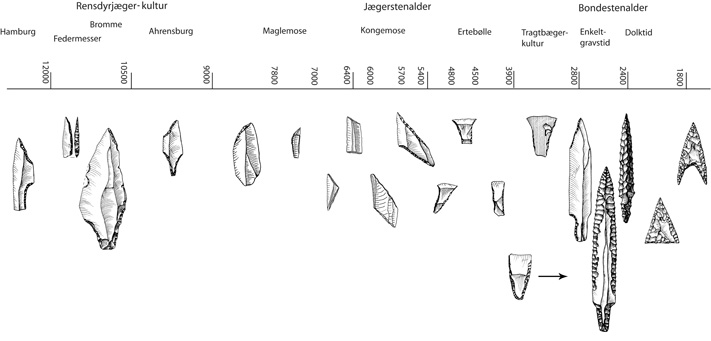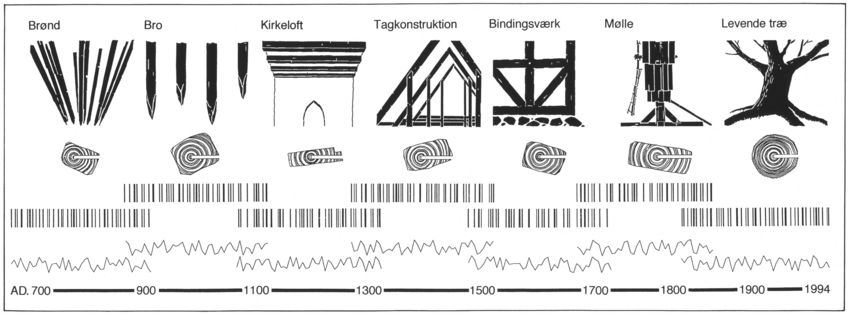How can we know how old something is?
The oldest and most widely used dating method in archaeology is typological dating. An artefact is dated on the basis of knowledge about the age of other similar artefacts. When you have seen a sufficient number of cars, you can easily see that a Volkswagen Golf is more recent than a Beetle – and that the Golf looks like other cars of the same period. The same applies to archaeological artefacts. But this only allows us to arrange the artefacts in the correct time sequence relative to each other. To get a calendar year for an artefact, we have to use scientific methods. The most commonly used are radiocarbon and dendrochronological (tree-ring) dating.
Radiocarbon (14C) dating is based on the rate of decay of the unstable radioactive carbon isotope 14C present in all organic material. As long as an organism lives it will take up new 14C, but from the moment it dies only decay takes place, i.e. the radioactive isotope converts to stable, ordinary nitrogen atoms 14N. The rate of this decay, the half-life, is known and so by counting how many atoms decay over a particular period, it is possible to work out how much time has elapsed since the organism died. At best, the method has an uncertainty of 25 years, and due to variations in intensity of cosmic rays there are periods in the Middle Ages and more recent times when the date obtained is very uncertain.
Dendrochronological dating
Dendrochronological dating can be carried out on certain kinds of wood and involves measuring the width of the tree rings. Trees of the same species growing in the same area will have the same growing conditions, so the "bar code" of the tree rings can be matched with samples already dated. At best – i.e. when the bark or outer tree ring is preserved – the felling date can be determined to within six months. Furthermore, the place the tree grew can be determined very precisely, which can be of great importance in the study of shipwrecks.
Mikkel H. Thomsen

